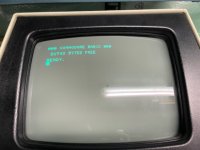daver2
10k Member
I would count the number of 'rubbish' bytes in the block and then the number of good bytes. I am guessing they will be a power of 2.
I would then look at the CPU address lines, the buffeted address lines, the video RAM address multiplexers and the address lines to the video RAM. It will be one of these. Knowing in advance which address line it is will reduce the search time...
Dave
I would then look at the CPU address lines, the buffeted address lines, the video RAM address multiplexers and the address lines to the video RAM. It will be one of these. Knowing in advance which address line it is will reduce the search time...
Dave


